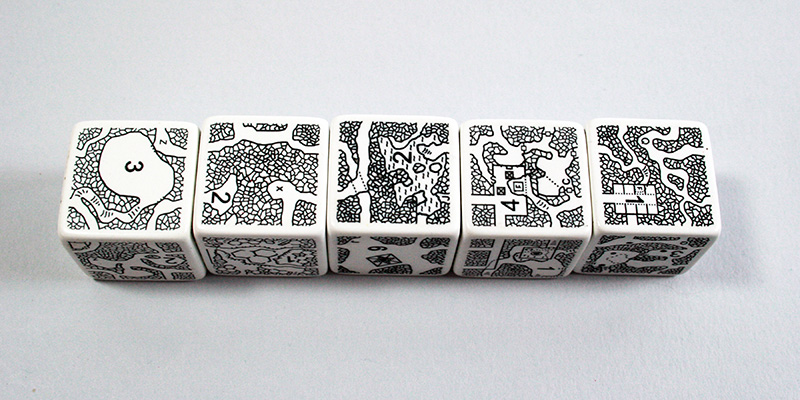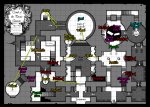I just wanted to share a way of actually using the quite fantastic Dungeonmorph Dice:
http://dungeonmorphs.com/
It vexed me on how to populate these things, then it hit me like a bolt from the blue. Use coordinates. Every geomorph is 10 ten foot squares to a side, with exits always on the third and eighth squares on each edge, so you can describe the location of a room in an X,Y location such as 3,7. It is easy to judge these coordinates on the Adventurer and Explorer dice sets, and a bit trickier on the Spellunker, Ruins, Villages and Cities sets, but doable, even if the coordinates for a house are only approximate.
This is the solution to generating an infinite number of campaign's worth of maps, and it doesn't require fiddling with computer programs or scribbling on graph paper, and maps can be made and referenced in seconds. Everyone who dungeon masters D&D should invest in a complete set of these things, I can't recommend them enough.
http://dungeonmorphs.com/
It vexed me on how to populate these things, then it hit me like a bolt from the blue. Use coordinates. Every geomorph is 10 ten foot squares to a side, with exits always on the third and eighth squares on each edge, so you can describe the location of a room in an X,Y location such as 3,7. It is easy to judge these coordinates on the Adventurer and Explorer dice sets, and a bit trickier on the Spellunker, Ruins, Villages and Cities sets, but doable, even if the coordinates for a house are only approximate.
This is the solution to generating an infinite number of campaign's worth of maps, and it doesn't require fiddling with computer programs or scribbling on graph paper, and maps can be made and referenced in seconds. Everyone who dungeon masters D&D should invest in a complete set of these things, I can't recommend them enough.
Last edited:


